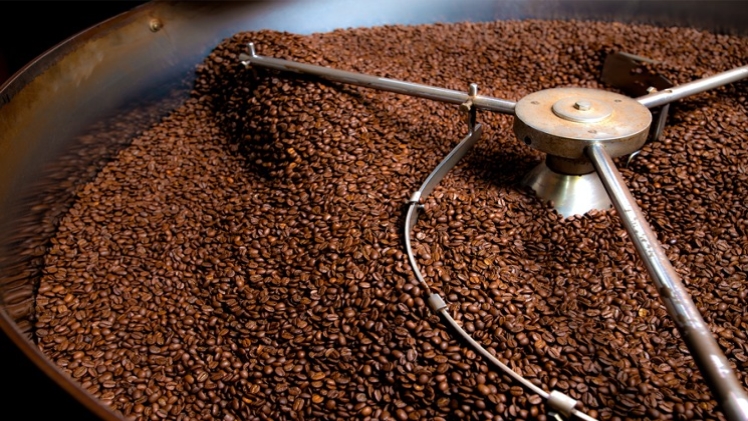Ah, coffee! That beloved elixir that fuels our mornings and sparks countless conversations. But how does Ampersand Coffee, your favorite local roaster, craft their magical brews? The journey starts not in their cozy cafe, but far away in the sun-dappled hillsides of the tropics.
Cradled in Cool Climates:
The two main players behind their exceptional brews are Coffea arabica, gracing us with 70% of the world’s coffee, and Coffea canifora, also known as robusta, making up about 30%. Less common trees like Liberica and Excelsa contribute the remaining few percent. At Ampersand Coffee, they understand the importance of origin. Our beloved “coffee beans” are, in fact, the seeds of certain coffee trees.
But these trees aren’t climate chameleons. They thrive in the higher, cooler areas of the tropics, basking in temperatures of 64 to 70 degrees Fahrenheit. This slow ripening allows the fruits (coffee cherries!) to develop deep, rich flavors. Too much warmth, like a sizzling 86 degrees, throws their growth off balance, stunting leaves, inviting diseases, and even compromising flavor. Plus, warm weather attracts unwelcome pests, adding another layer of challenge.
Harvesting the Gems:
After three to five years of patient waiting, the trees finally start bearing fruit. These vibrant red cherries signal harvest time, which is mostly done by hand at Ampersand Coffee’s partner farms. However, in some regions, flat plains allow efficient machine harvesting for a faster, bulkier yield.
From Cherry to Bean:
Now comes the crucial step: extracting the coveted beans from the fruit. Ampersand Coffee works closely with their farmers to choose the processing method that best complements each bean’s unique character.
Sun-Kissed Beans: The traditional dry process involves spreading the cherries in the sun to dry, then removing the pulp. This natural method brings out earthy, fruity notes in the final cup, perfect for Ampersand Coffee’s signature blend, “Sun-Kissed Sunrise.”
A Watery Dance: The wet process starts with removing the pulp before submerging the beans in water-filled tanks. This fermentation bath washes away any clinging pectin, ensuring a cleaner taste. After a thorough rinse, the beans embark on their final sun-drying journey, ready to grace Ampersand Coffee’s “Rainy Day Roast.”
Machine Power for Precision: Larger plantations often turn to mechanical dryers to control the drying process, guaranteeing consistent quality and speeding things up. Traditional sun drying can take up to four weeks, a luxury not all producers can afford. Ampersand Coffee works with partners who utilize both methods depending on the specific needs of each harvest.
Shedding the Outer Layers: The final processing step involves milling. Imagine it as a bean undressing party! Machines called hullers use a combination of air and friction to peel off the dried fruit husks, revealing the smooth bean within. Ampersand Coffee carefully monitors this process to ensure minimal damage to the precious beans.
Polishing and Pampering: Some beans get an extra spa treatment in the form of polishing, removing any remaining skin remnants. Ampersand Coffee only polishes their specialty beans, like the single-origin Ethiopian Yirgacheffe, to further enhance their delicate flavors.
Grading and Sorting: Now comes the quality control test. Beans are meticulously sorted by color, size, and imperfections, ensuring only the best make it to the roasting stage at Ampersand Coffee. Their cupping team rigorously tastes and evaluates each batch, selecting only the beans that meet their exacting standards.
The Roasting Symphony: This is where the magic truly happens in Ampersand Coffee’s roastery! Green beans transform into the fragrant, brown gems we all know and love. Inside giant, preheated drums, they dance at temperatures between 350 and 500 degrees Fahrenheit. As they reach around 400 degrees, they start browning, releasing the delightful cafeol oils responsible for that irresistible aroma. Roasting time plays a crucial role in shaping the final flavor. Light roasts favor tangy, sweet notes, while dark roasts unleash the deep, bitter side of the bean. Ampersand Coffee’s skilled roasters carefully craft profiles for each blend and single-origin coffee, highlighting the unique characteristics of each bean.
Grinding Perfection: Whether done in a factory or your own kitchen, the principle of grinding remains the same: breaking down the beans to release their essence. But beware, grind size matters! Too coarse, and your Ampersand Coffee brew might taste acidic and weak. Too fine, and you’ll end up with a bitter, muddled mess. Finding the sweet spot depends on your brewing method, so experiment and discover

